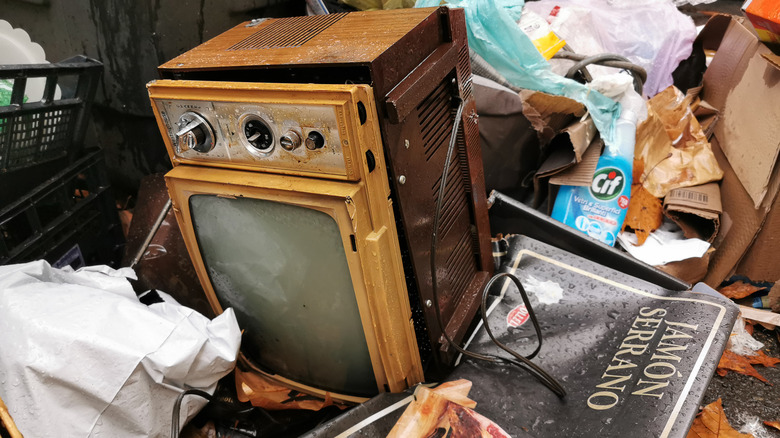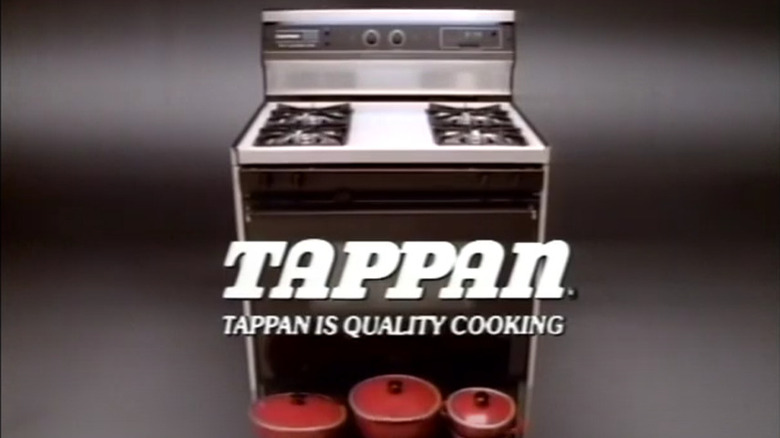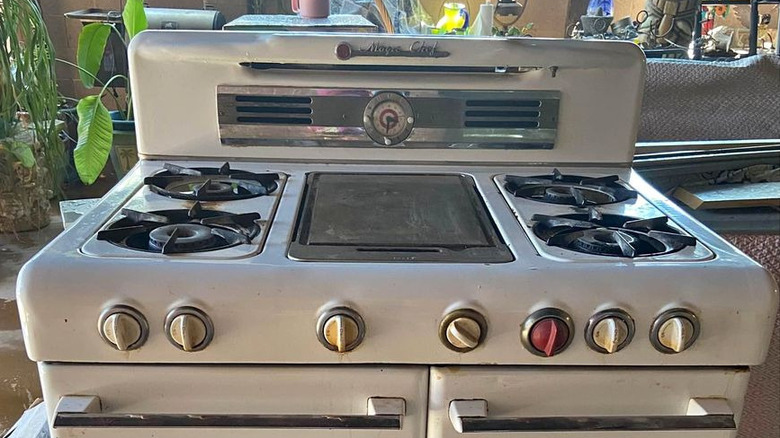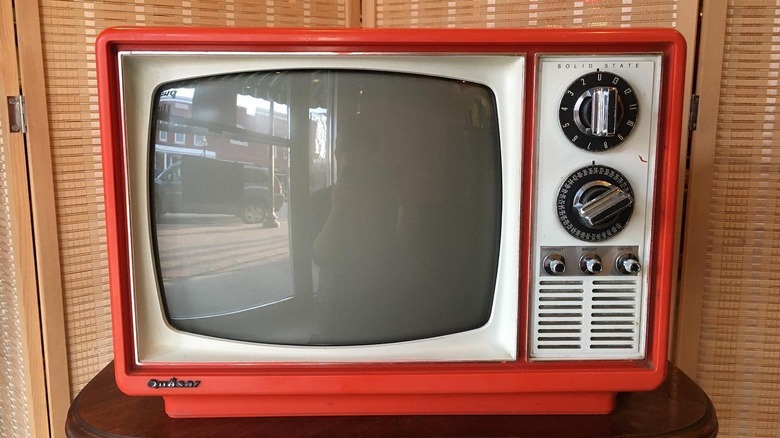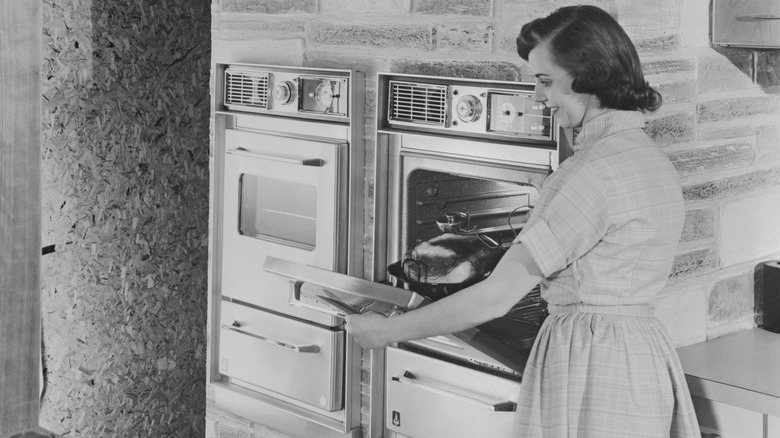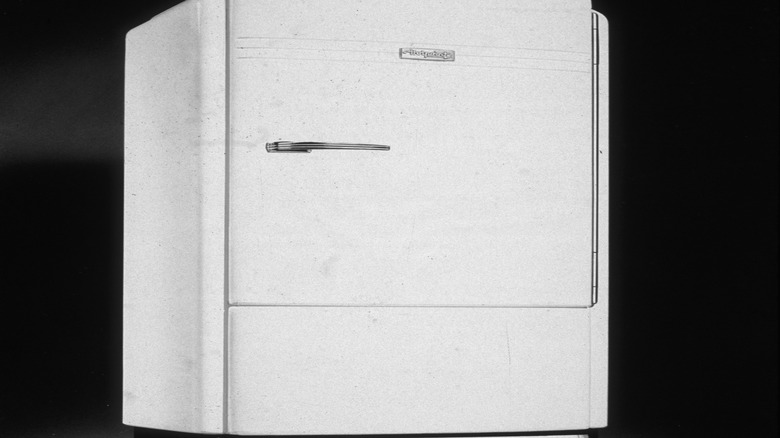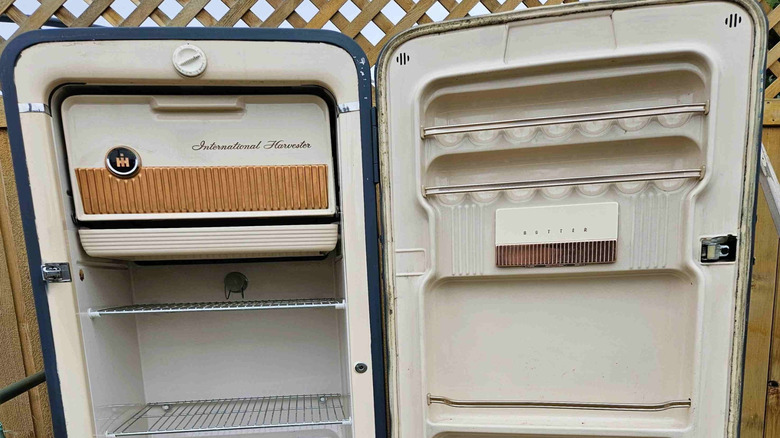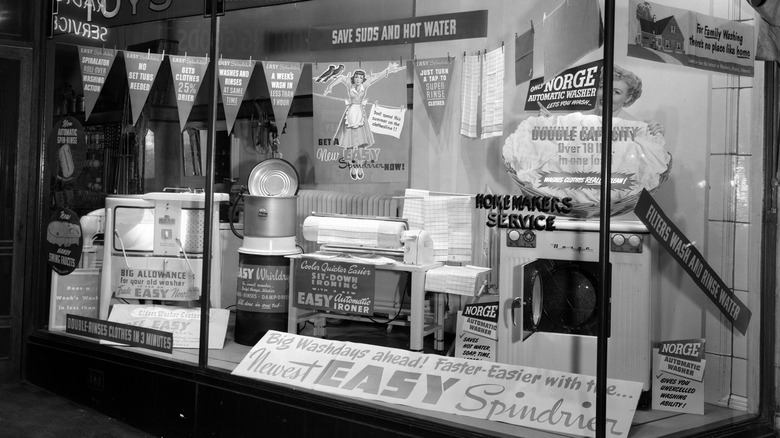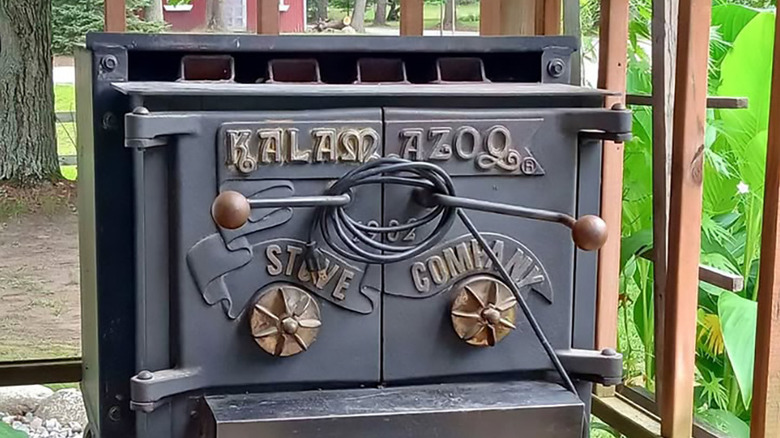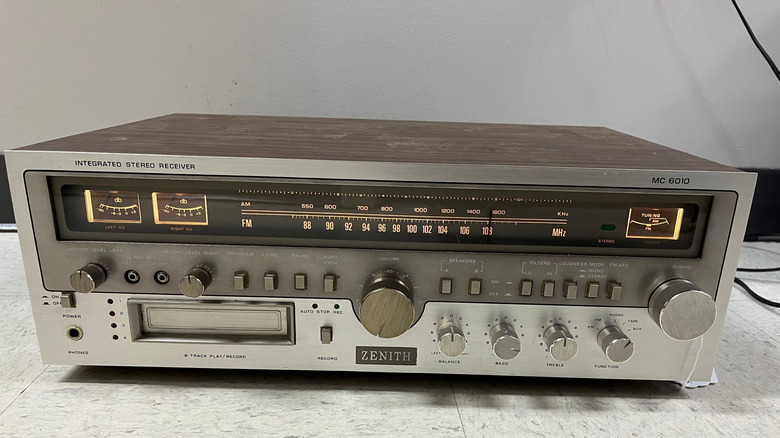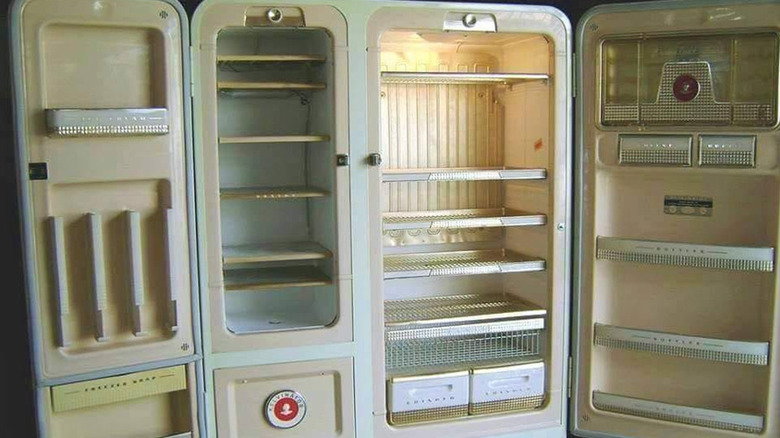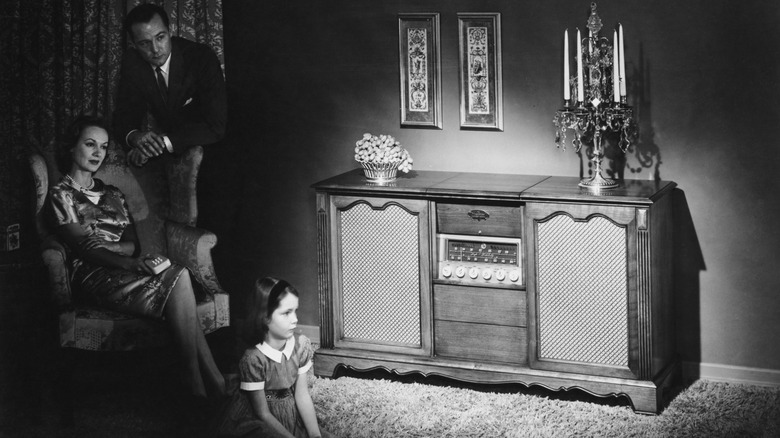12 Household Appliance Brands That Have Been Long Gone And Forgotten
These days, we're all wondering how to make our house more of a smart home, valuing efficiency and technology to make our lives easier. But before the smart home, there were a number of appliance brands and companies that made the most innovative and revolutionary machines and gadgets of the time. While we're no stranger to choice in this modern day, back in "The Day" there were a number of appliance companies that were massively popular, and many of the appliances were new inventions, harnessing innovative technology.
But, as with the busts and booms in the zeitgeist of popular things, many of these appliance companies have since been forgotten, replaced by more modern names, or absorbed by larger conglomerates. While some managed to pivot and still produce household machines, they are nowhere near as ubiquitous as they once were during their heydays in decades past. Diving into the archives of history, we explored the appliance brands and their products that have faded away in the backdrop of robot vacuums and Wi-Fi-enabled televisions. But, without some of these predecessor appliances and the companies that manufactured them, we may not be in the ultra-savvy home appliance world that we are in today. Some companies on this list may be familiar to you, but you'll be surprised at what they used to be famous for!
Westinghouse Appliances
The Westinghouse Electric Corporation, founded in 1886, was a powerhouse company that revolutionized the delivery of electricity throughout the 19th and 20th centuries. Dabbling in machine manufacturing, the company produced numbers of products including the Westinghouse Washing Machine, air conditioners, microwaves, and briefly, even televisions. But, it faced intense competition from big names like General Electric, and it consistently fell behind competitors in sales. Ultimately, Westinghouse mostly dissolved its appliance ventures, returning to the energy industry in commercial nuclear projects (eventually sold to Northrup Grumman) as well as exploring broadcasting companies (now known as the CBS Corporation).
Tappan Appliances
Tappan Appliances was founded in Bellaire, Ohio in 1881 by W.J Tappan, a Victorian cast iron stove salesman. Evolving from iron stove manufacturing and selling, Tappan would go on to massively innovate the kitchen appliance industry, introducing the first multi-colored, all-porcelain range in the 1920s, the first at-home model of microwave in the 1950s, the first electric ignitions for gas stoves in the 1960s, and the first combo range and microwave unit in the 1970s. Sold to Electrolux in 1979, today, the brand sells a limited number of appliances, including electric and gas ranges, refrigerators, dishwashers, and microwaves.
Magic Chef
Born from the American Stove Company that was founded in 1901, Magic Chef was established in 1929. The American Stove Company had invented the oven temperature control function just a decade prior, and Magic Chef went on to become a household name in cooking appliances. Now a part of the Whirlpool Corporation, Magic Chef-branded items are still produced so it's not uncommon to see modern dishwashers and ranges for sale — though they don't look anything like the enamel mid-century models the company was once known for.
Quasar
Nothing said innovation quite like Quasar television in the 1970s and 1980s. The Quasar television was known to have the best picture quality of the time, and its "works in a drawer" television design — placing the television in a cabinet or on portable rolling stand — was extremely popular in an increasingly suburban world. Founded as a part of Motorola, Quasar unfortunately could not hold on to its innovator reputation for too long, and other brands surpassed the company in television advancements. Eventually acquired by Panasonic, you'll likely not see a Quasar television hit the market in the near future.
Whirlpool
Whirlpool is known for its investment-worthy washing machines and dryers, but there was a day when the company was a home appliance giant producing a diversity of machines under the Whirlpool name. Founded in 1911 by Louis Upton who, at the time, was an insurance salesman, the company grew to a be multi-label conglomerate. Nowadays, many of their star appliances are manufactured and sold under different brand names, like KitchenAid and Maytag, so you see less of the Whirlpool name on appliances than you once did, but you'll find your fair share of Whirlpool appliances still in stores.
Hotpoint
Hotpoint was always at the forefront of its endeavors, inventing the first lightweight home electric iron in 1905 and the first refrigerator on wheels for simple cleaning in 1953. The company also introduced that 90-day satisfaction guarantee that we're all so familiar with today, allowing any customer to replace their appliance if they weren't happy with it. In 1965, the company invented a gentle-wash laundry machine for delicates, so for the first time ever, you didn't have to hand-wash all those items. Though Hotpoint was always innovating, it eventually lost its steam and was taken over by General Electric. You can still find Hotpoint-branded appliances in stores, though they don't have the same futuristic charm as they once did.
International Harvester
International Harvester began life as a farm machine manufacturing firm who made the leap into appliances after World War II. Known for its iconic farm tractors, the company reached a level of house appliance fame with their refrigerators. Though they initially struggled with their farm-family demographic who wasn't used to refrigerating or freezing their food, once they introduced accent colors on the appliances in a "femineering" campaign, the refrigerator quickly gained popularity. Sadly, the fridge's lifespan was short lived as it was only produced for a decade.
Norge
Known as a trusty appliance brand with durable products, Norge was a staple in American houses throughout the 20th century. Their products were associated with such longevity that the company's slogan once was "Built Like a Ship." They were easy to use, lasted for many years, and were stylish in a home, but as international manufacturing made other brands more affordable and available, Norge's popularity waned from its mid-century heyday. By the 1970s, Norge was absorbed by Maytag and the name all but disappeared.
Kalamazoo Stove Company
With a catchy slogan of "A Kalamazoo Direct to You," this Michigan company endeared itself to Americans across the country. In the first half of the 20th century, the Kalamazoo Stove Company manufactured millions of stoves, and even introduced a highly popular electric range in 1947. However, World War II was difficult on the company, which converted 97% of their manufacturing facilities into defense material production sites for the war effort. Pivoting back to appliances post-war was tough for Kalamazoo. They could no longer keep up with competitors like Tappan, and they stopped production in 1952.
Zenith Electronics
Once the largest manufacturer of televisions and radios in America, Zenith Electronics was a true appliance trailblazer up until its bankruptcy in 1999. Zenith was responsible for many "firsts," inventing the first wired and wireless remote controls, the first flat-screen high-res color picture tube, and introducing HDTV broadcasting in 1988. The company also invented the first portable radio in 1924. As is the case with many of these brands, international competition eventually made Zenith obsolete. It was, however, acquired by the South Korean company LG Electronics, which still sells products with the Zenith branding in a nostalgic turn.
Kelvinator
Founded in Detroit in 1916 as the Electro-Automatic Refrigerating Company, the Kelvinator Corporation was a history maker. In 1925 they introduced the first electric home refrigerator, replacing ice boxes of the eras prior. From the 1930s to the 1950s, having a Kelvinator in your home was a stylish status symbol that showed off your technological savvy. But, after dominating the market for decades, other consolidated companies outpaced Kelvinator. Eventually, they were purchased by Electrolux, and the brand name ceased to exist. However, nowadays Kelvinator's iconic design is sought after for those who want vintage kitchen appliances in their homes.
Magnavox
Magnavox was once the leading player in audio technology, extending their manufacturing prowess to televisions. The company was founded in 1917 as a leading manufacturer of phonographs, and then eventually would become a premium radio producer. As the 1960s approached, Magnavox became one of the most reliable television manufacturing brands, and by 1972, the company had also invented the first television video game console, called the Odyssey. After a merger with Philips, though, Magnavox lost its distinct sparkle, fading into the background of television manufacturing.

